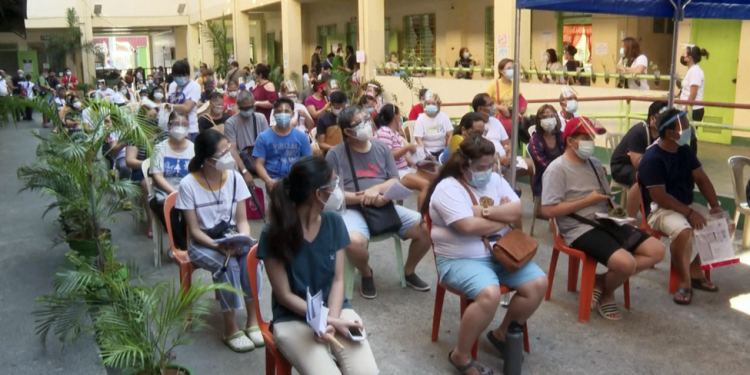Philippines now ‘high-risk’ for COVID-19: DOH

Manila residents, who have registered to receive COVID-19 vaccines. PHOTO
The Deprtment of Health (DOH) yesterday said the Philippines is now at “high-risk” for the spread of COVID-19.
The growth rate of coronavirus cases in the country increased to 42 percent in the past two weeks, prompting the DOH to elevate our case classification to high-risk,” Health Undersecretary Maria Rosario Vergeire said in a press briefing.
From July 26 to Aug. 8, 2021, the country’s average daily attack rate (ADAR) per 100,000 population is at 7.20, Vergeire added.
ADAR is the number of new cases over a 2-week period, divided by the population.
Metro Manila, Cordillera Administrative Region, Ilocos Region, Cagayan Valley, Calabarzon, Central Visayas and Northern Mindanao were among regions tagged as “high-risk”.
There is a 59 percent increase in COVID-19 cases across all age brackets between July 13 and 25, the DOH said in a statement.
“The highest increase was observed among the 30-39 age group and lowest among those 80 years old and above during the same period,” it said.
The agency has yet to give details on how many COVID-19 cases were recorded for each age group.
“Dapat ay liwanagan natin na itong pagtaas ng kaso ay nararamdaman sa lahat ng grupo at hindi lang sa mga bata,” said Vergeire.
(We have to clarify that the rise in cases is felt in all age groups and not just with kids.)
The DOH’s statement comes as several groups clamor to include teens and children in the government’s COVID-19 vaccination program after the Philippines’ infection rate shot up to 20 percent due to the spread of the more contagious Delta variant.
Since March 2021, the Philippines has been vaccinating medical workers, elderly, persons with comorbidities, essential workers, and indigent adults against COVID-19.
The DOH earlier said that children are still not included in the vaccination program “due to the global scarcity of vaccine supplies.”
As of August 7, the government has fully vaccinated 11.2 million individuals, according to data from the DOH.






